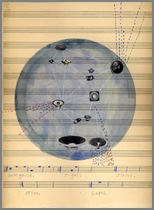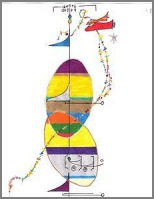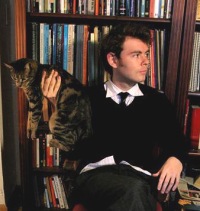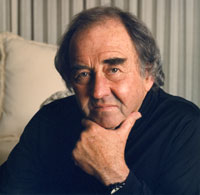This Fall marks the twentieth season of provocative programming in New York City brought to you by Interpretations. Founded and curated by baritone Thomas Buckner in 1989, Interpretations focuses on the relationship between contemporary composers from both jazz and classical backgrounds and their interpreters, whether the composers themselves or performers who specialize in new music. To celebrate, Jerry Bowles has invited the artists involved in this season’s concerts to blog about their Interpretations experiences. Our second concert this season, on 16 October, features cellist Ted Mook, who has put together a program celebrating Ezra Sims’ 80th birthday on one half and promoting the music of Daniel Rothman on the other half:
Pansonority/Luminance: Music of Ezra Sims and Daniel Rothman
The two composers sharing this program have several things in common, things which are easy to talk about, write about and argue about. Sadly, some of these things can also be used as labels, to either wave as a standard of allegiance or a category to avoid. Neither composer has an institutional association, both composers work quietly in the calm, away from the frenzy of self-promotion. Both composers write meticulously considered music, consciously keeping the past in mind, but always stepping away from their last piece. Neither composer is on the tip of anyone’s tongue, but they are as well regarded as any similarly controversial artist. They are comfortable writing music that departs from the 12 note equal-tempered scale that dominates music today, though they can and do otherwise. Hence, pansonority.
Luminance, because it’s music that, for whatever reason, glows with its own light.

Little Brownies, little brownies, your master/mistress is dead.
Little Brownies, little brownies, your master/mistress is dead.
Little Brownies, little brownies, your master/mistress is dead.
 Ezra Sims is a horse of a different color, and an older one, too, since we are celebrating his 80th birthday. Born in 1928, far off the musical reservation in Birmingham, Alabama, he showed intellectual and musical precociousness as a youngster and progressed through piano, string bass, choral singer, composer, Yale student, Mills student (with Darius Milhaud), New Yorker, Guggenheim Fellow in Japan, inventor of a 72-note per octave non-symmetrical notation system, resident of Cambridge, Massachusetts, co-founder of Dinosaur Annex (a Boston based new music ensemble) and still is writing music. In the 60s, driven by his ear to write down notes that were not reproducible on the piano, he developed a tonal system of 17 irregularly spaced notes, fully transposable, resulting in a 72 note sub-division of the octave. Taking it one step beyond the flattened system of Harry Partch (based on a root-ratio), Ezra’s system evolved a harmonic language allowing for closely related and fully chromatic modulations. These vast tonal resources are tamed by a somewhat conservative, almost Brahmsian romanticism, and the resulting music is clear and expressive. Pianist Eric Moe, mezzo-soprano Mary Nessinger, and I will be playing a set of works spanning his career.
Ezra Sims is a horse of a different color, and an older one, too, since we are celebrating his 80th birthday. Born in 1928, far off the musical reservation in Birmingham, Alabama, he showed intellectual and musical precociousness as a youngster and progressed through piano, string bass, choral singer, composer, Yale student, Mills student (with Darius Milhaud), New Yorker, Guggenheim Fellow in Japan, inventor of a 72-note per octave non-symmetrical notation system, resident of Cambridge, Massachusetts, co-founder of Dinosaur Annex (a Boston based new music ensemble) and still is writing music. In the 60s, driven by his ear to write down notes that were not reproducible on the piano, he developed a tonal system of 17 irregularly spaced notes, fully transposable, resulting in a 72 note sub-division of the octave. Taking it one step beyond the flattened system of Harry Partch (based on a root-ratio), Ezra’s system evolved a harmonic language allowing for closely related and fully chromatic modulations. These vast tonal resources are tamed by a somewhat conservative, almost Brahmsian romanticism, and the resulting music is clear and expressive. Pianist Eric Moe, mezzo-soprano Mary Nessinger, and I will be playing a set of works spanning his career.
Interpretations at Roulette
20 Greene St between Canal and Grand
New York NY
8:00pm
 Whoa!
Whoa! Dude!
Dude! My first year in college (1974-5), we were treated to an exhibition of the original score pages selected by John Cage and Alison Knowles for their highly influential 1969 book Notations (currently
My first year in college (1974-5), we were treated to an exhibition of the original score pages selected by John Cage and Alison Knowles for their highly influential 1969 book Notations (currently  I’m mentioning this because down here in Houston I just received a little whiff of that wonderful déjà vu this afternoon. The Contemporary Arts Museum Houston has a show up and running through December 7th, titled
I’m mentioning this because down here in Houston I just received a little whiff of that wonderful déjà vu this afternoon. The Contemporary Arts Museum Houston has a show up and running through December 7th, titled  Unlike the album driven days of yore, today it’s all about the mix. From purchasing single tracks digitally at online stores such as Itunes and Amazon to the internet radio sensation Pandora, which tailors ‘stations’ to a listener’s preferences, music is presented as eminently accessible; instant gratification, inevitable. While all aforementioned methods of mix are exciting in their potential for discovery, surfing the impossibly
Unlike the album driven days of yore, today it’s all about the mix. From purchasing single tracks digitally at online stores such as Itunes and Amazon to the internet radio sensation Pandora, which tailors ‘stations’ to a listener’s preferences, music is presented as eminently accessible; instant gratification, inevitable. While all aforementioned methods of mix are exciting in their potential for discovery, surfing the impossibly  In 2002,
In 2002,  Gabriel Kahane
Gabriel Kahane Another full house at Zipper Hall, and we enjoyed ourselves with the music of
Another full house at Zipper Hall, and we enjoyed ourselves with the music of  New York’s NPR station WNYC has been doing a bunch of programming on Leonard Bernstein, and the other night when I was moving my car I heard a great story:
New York’s NPR station WNYC has been doing a bunch of programming on Leonard Bernstein, and the other night when I was moving my car I heard a great story: Gloria Cheng
Gloria Cheng